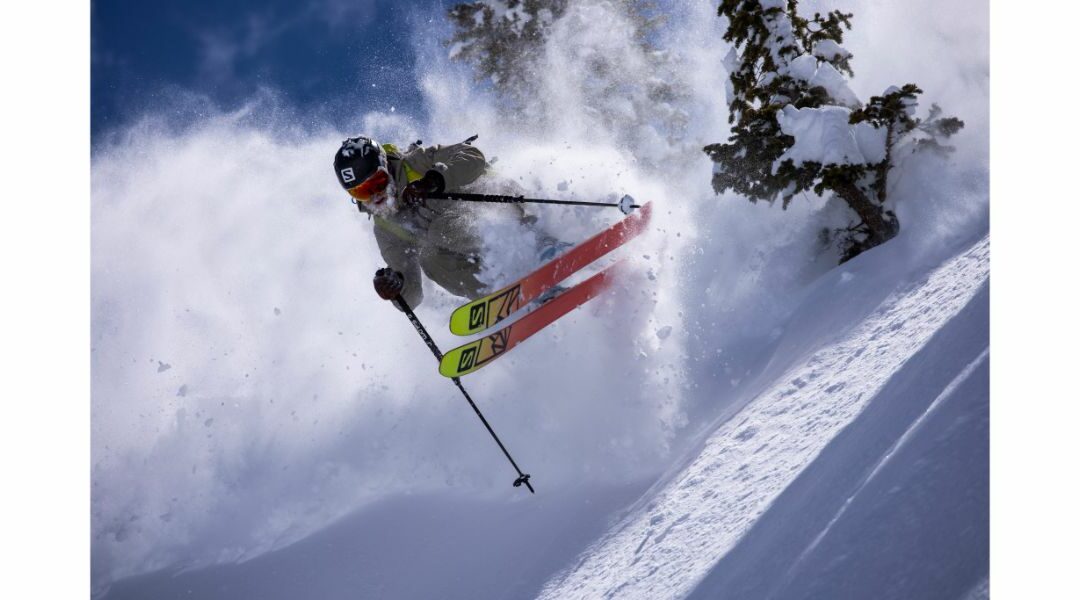It wouldn’t be unfair to lump all skis over 100mm at the waist into a giant bucket labeled, “Powder,” and leave it at that. Obviously, the fatter the ski the better the flotation, so pick a ski based on how high you want to ride on new snow and you’re good to go. We decided to divide the powder pie in two because there are big behavioral differences between the Big Mountain bundle of skis (101mm-113mm) and the cluster over 120mm.
The very fact that most manufacturers make (at least) one model in each genre verifies that there are reasons to make two distinct models to serve the Big Mountain and Powder categories. The best of the Big Mountain brotherhood are everyday skis for strong riders on – you guessed it – big mountains. But there are also easy riders in the Big Mountain corral; skis that will help the less talented whip their powder skills into shape.
The split personality of the Big Mountain genre is a result of the evolution of the fat ski phenomenon as a whole. Twenty years ago, when the concept of powder skis was still in its infancy, fat boys were conceived as learning aids for the uninitiated. Experts initially avoided the budding category as if they were badges of ineptitude – until they tried them. When Shane McConkey straight-lined a legendary couloir on a pair of 90mm Volant Chubbs, the collective attitude of the elite was tweaked. Suddenly a new mini-market emerged for high-octane athletes seeking first descents on previously unskiable pitches. Movies from Matchstick Productions and Teton Gravity Research showcased a new frontier in adrenaline sports, and the race was on to see who could make the best tool for these new school, big mountain athletes.
Flashing forward to today, both communities – those who want to maintain their speed in new snow and those who want to maintain their dignity – are being over-served by a brilliant buffet of options. Whether you tear into powder or tiptoe in, the right Big Mountain ski will make slicing knee-deep fresh snow nearly effortless.
People in the market for a powder ski tend to think bigger is better, that if a little flotation is good, massive flotation is better. It’s true that there’s no substitute for surface area, but flotation isn’t the only quality required for off-trail conditions. Some aptitude for moving quickly edge to edge is useful in moguls, which inevitably develop where sno-cats fear to tread. Edging accuracy comes in handy on steep traverses, and short-radius turns are de rigeur in pucker-tight couloirs. Point being, the slightly narrower chassis of a Big Mountain ski is probably a better powder ski for most skiers than the super-wide models that qualify for the Powder club by being next to useless anywhere else.
Every Big Mountain ski pries the tip and tail off the snow to some degree because there’s no better way to motor through crud – powder’s wicked stepbrother – than with a tip that won’t catch and a tail that won’t hang up. Some Big Mountain models are cambered underfoot, some aren’t. The biggest behavioral chasm in the category is the separation of models that can be trusted to hold just a ribbon of edge on hard snow and those who do their best work in the worst conditions, drifting over rubble like it was made from ice cream.
There are two major provisos that need to be shouted from the rooftops: one, acquiring an everyday ski that is too wide poses an increased risk of joint fatigue and even injury to the skier, even if he or she never falls; and two, skiers charging full speed on skis with huge girth but little effective contact area and perhaps no capacity for clean edging pose a danger not just to themselves, but every other person in their flight path.
Please pay attention, because this is why our test criteria are more important today than ever. Heavily rockered skis in the Big Mountain waist width zone of 101mm to 113mm can easily inspire the illusion that their owner suddenly has skills. After all, he can now kill it in the freshies, charging like an off-the-rails locomotive. When he rolls his act out on the groomers, still hauling, still squatting over the middle of his skis, his ultra-rockered tips and tails wildly slapping the snow, his ability to change trajectory and avoid the downhill skier is perilously close to nil.
This is perhaps the most important slope safety issue of our time. Please, people, restrict your use of Big Mountain skis to the off-trail terrain for which they were designed.

